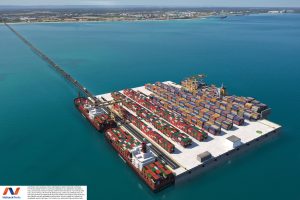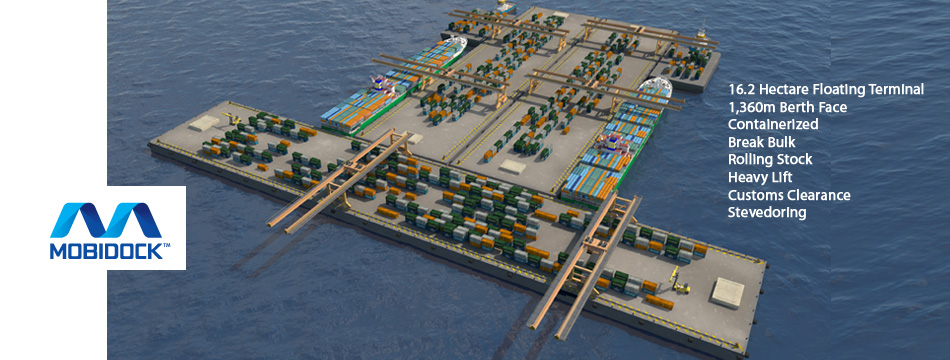Port congestion has become a major problem in high-growth regions. Every major port is struggling to meet demand and remain competitive. Excessive waiting times for ship berthing and associated high demurrage costs are now the norm.
Apart from delays and increased costs to local businesses, National revenues are lost with the diversion of cargoes to ports of neighboring countries. The knock-on impact of port congestion is felt throughout the economy.
Building Port Capacity
Additional port capacity boosts international trade and improves the revenue profile of a nation. The problem is that it takes a long time and significant capital to build new capacity. Open land next to deep water is no longer plentiful. Building deepwater berths is expensive and time-consuming. Environmental permitting is getting more complicated, expensive, and restrictive.
Around the world, floating ports are now considered the most economical way to expand port capacity.
National Ports’ modular port solutions provide a cost-effective and practical alternative for all types of cargo:
- Containerized
- Break Bulk
- Bulk Commodities
- Project Cargo
- Rolling Stock
Port Services

National Ports’ strategically located floating terminals offer services including:
- 1,360m of deep water berth frontage
- 16.2 hectares Laydown and storage
- Dedicated Ro/Ro berths
- On-dock rail for Rolling Stock Logistics
- 10,000t Ship Lifter
- Customs & Quarantine
- 90,000m3 Fuel Storage
- Potable Water Generation
- Ship Repair & Maintenance
- Heavy lift & container cranes
- Cold storage, and warehousing
- Stevedoring services
- Cargo management
Ship Repair & 10,000t Ship Lifter
A full-service ship repair facility and 10,000t ship lifter offer Port Authorities and local economies significant competitive advantages.
No CAPEX Solution
National Ports operates under a Build, Own, Operate (BOO) model allows Port Authorities to conserve capital and gain berth capacity off the balance sheet.

 en_AU
en_AU pt_BR
pt_BR ru_RU
ru_RU